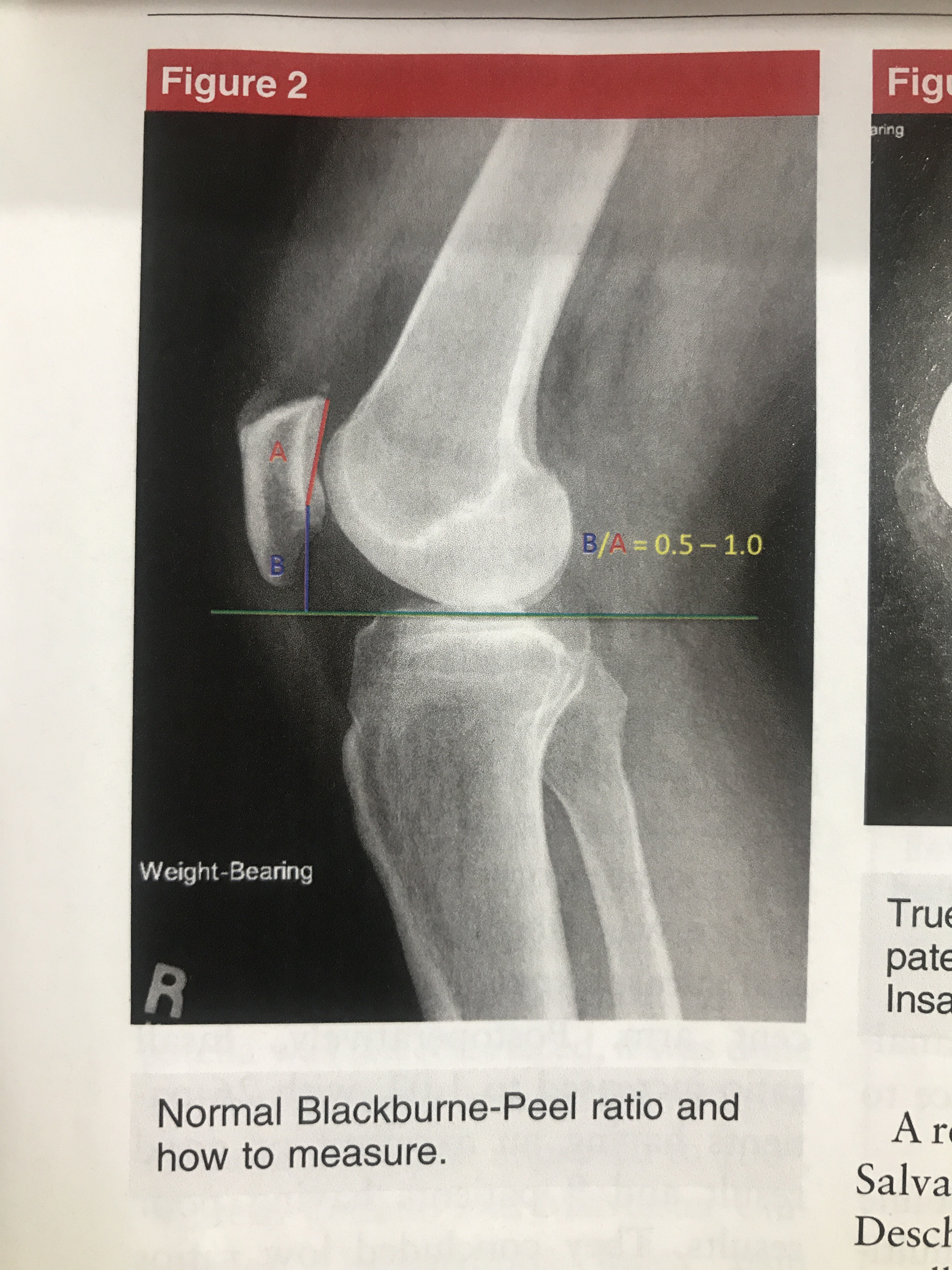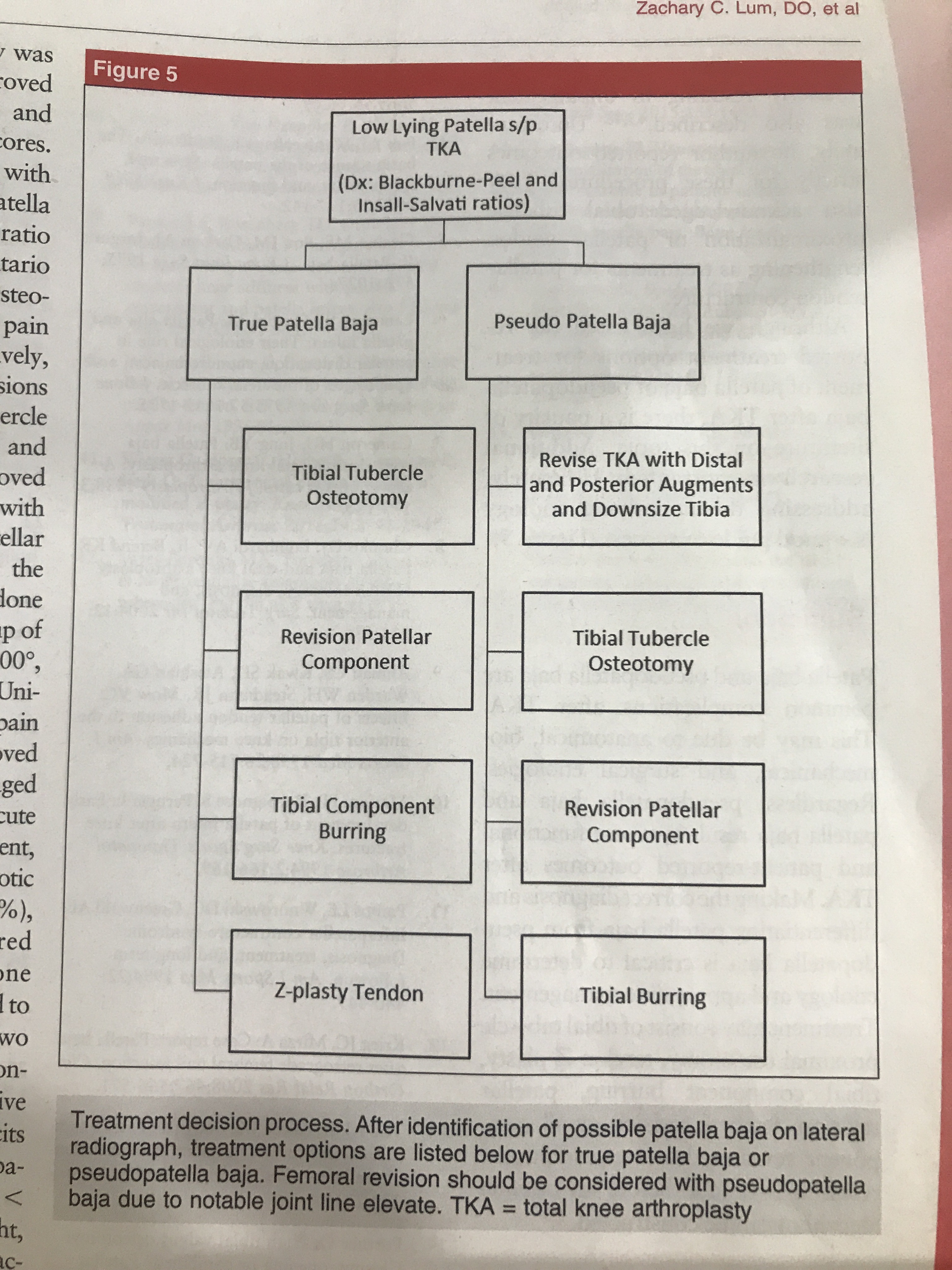21 Jul Patella Baja after Total Knee Arthroplasty /Replacement
Recently there was an interesting article in the Journal of AAOS April 15,2020 vol 28 ,no 8 “Patella Baja in Total Knee Arthroplasty” Zachary C.Lum et al . Following is some of the very important take home messages from it .

Blackburne and Peel ratio is made as shown in the picture and this ratio was predictive of worse outcomes if decreased .
Patella baja is diagnosed on lateral post operative X-ray the next step is to differentiate true from psuedopatella baja . True patella baja is present when the length of the patellar tendon becomes shorter than normal whereas elevation of the joint line without change in length of the patellar tendon is termed pseudopatella baja .
Key factors which contribute to the elevation of joint line are
- Elevating the femoral joint line ( excessive distal femoral and consequently posterior femoral cut to achieve equal balance)
- Elevating the joint line (under resecting the tibial cut and replacing it with the tibial baseplate and insert that is thicker than the resected bone )
- Excessive soft tissue release necessitating elevation of tibiofemoral joint line to provide stability
Pseudopatella Baga occurs more common in revision TKA .Thornton Bott et al found the incidence of psudopatella baja increases with the extent of soft tissue release , increase in insert thickness and the TKA undergoing extensive soft tissue release increase the risk of paudopatella baja by 100%.
In the article it was also mentioned that the surgeon should pay attention to the joint line preoperatively using fibular head ( within 1 to 1.5 cm ) , intraoperatively using relative measurements to the medial and lateral epicondyles( 25 mm from medial epicondyle and 30 mm from lateral epicondyle)
Treatment Algorithm

In conclusion making the correct diagnosis and differenting patella baja from pseudopatella baja is critical to determine the etiology and appropriate management .


No Comments